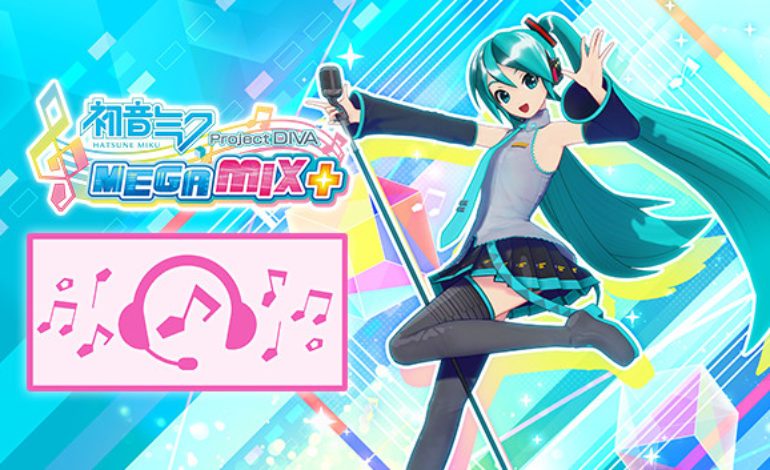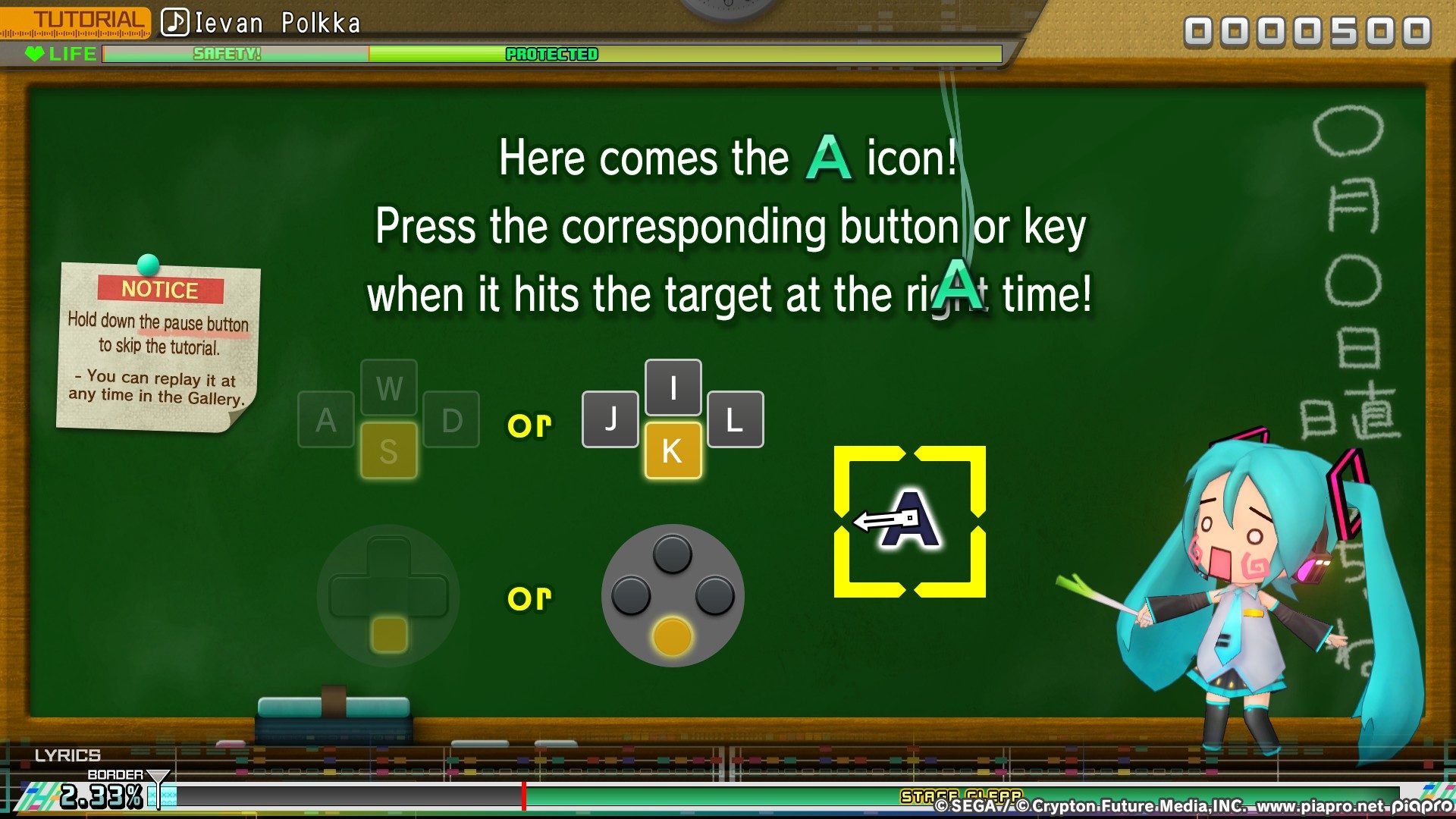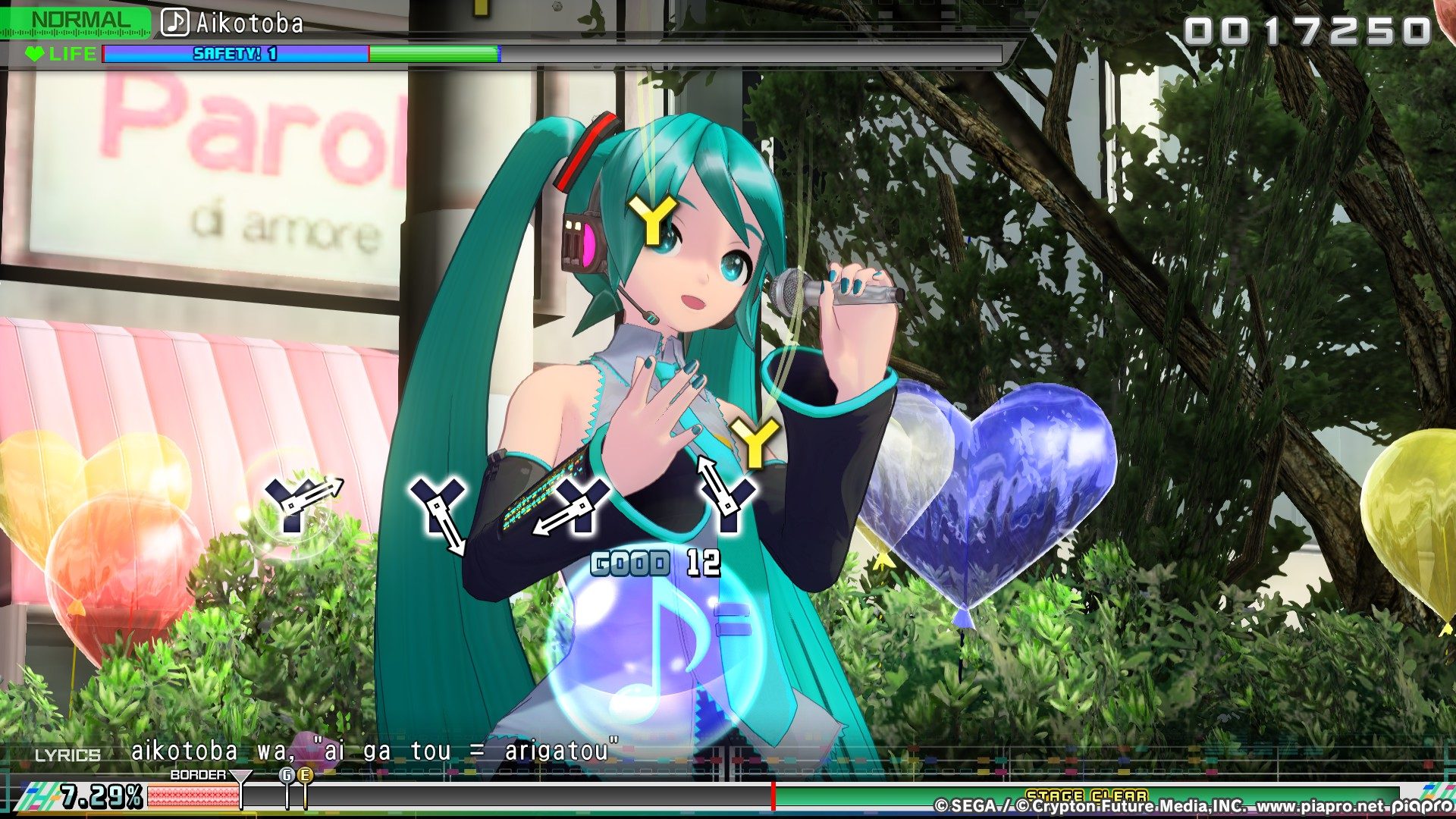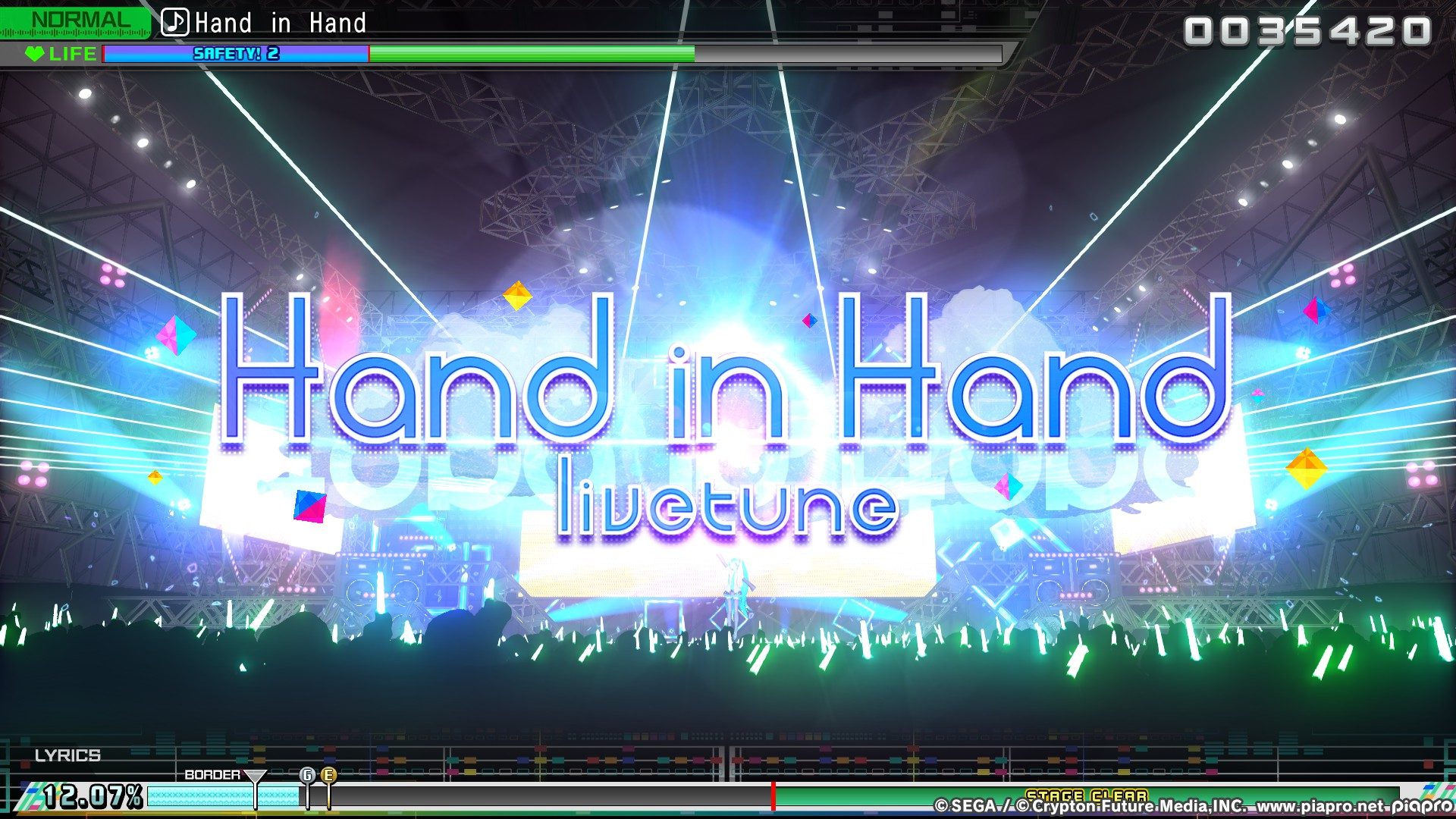

I have to admit: I know very little about Hatsune Miku. I had never even heard of the 13-year-old game series Hatsune Miku: Project DIVA before playing its newest entry, Hatsune Miku: Project DIVA Megamix+. Despite my lack of knowledge about the game, its series, or its title character, Hatsune Miku: Project DIVA Megamix+ managed to engage me very quickly, with a fun blend of classic rhythm game mechanics, some fun visuals, and a very replayable loop.
For those of you (like me) who don’t know anything about this series, I’ll start with its general concept. In the Hatsune Miku: Project DIVA series, you play a pretty standard rhythm game, but instead of the songs being selected from popular music or maybe instrumental tracks, all of the songs are made using Vocaloids, the voice generation software that spawned Hatsune Miku initially. While not all of the songs in Megamix+ are Hatsune Miku songs, the vast majority of the are, and most of the others feature her in some way.


When I say that the gameplay of Megamix+ has pretty standard rhythm gameplay, I mean that it has the usual button prompts floating across the screen towards a corresponding slot and when the button floats into the slot, you press the button on the controller. The closer you are to perfect timing, the more points you get. You can also build up a streak for consecutive correct hits, and missing will break the streak. Additionally, you have a sort of life bar up at the top of the screen, and missing buttons will drain the bar, and if the bar fully drains the round will end automatically and you will fail.
I really don’t have a lot more to say about the gameplay because it really does not get much more complicated than that. It is very much a twist on Dance Dance Revolution without the mat. There are a few alterations. For example, buttons float in from anywhere on the screen and move at varying paces, which I found made it a little hard to track them at times, as buttons might actually pass over other buttons to get where they’re going, which resulted in me pressing buttons at the wrong times, thinking they were going to other places.


The streak system also struck me as a little interesting. I couldn’t really tell what kind of bonus a streak gave you (though it was clear that there was some bonus), but you can only keep a streak on consecutive “Good” or “Cool” presses, which are the two best in the game. The next level down, “Safe”, will end a streak, even though a “Safe” button press felt pretty good to me. This makes the streaks very difficult to maintain, which in turn made it quite difficult to get higher rank finishes, though that might also have to do with my lack of rhythm game experience (and decidedly iffy sense of rhythm in general).
Perhaps the largest issue I had with the gameplay was that the game really struggled to keep a solid framerate. Even on my hefty gaming PC, the game would often drop to noticeably low framerates that would be choppy for any game, but felt extra-bad in a rhythm game. As you would expect, having the icons freeze on the screen and then move again as the game chugs along, trying to keep up with the pace of the song, makes it really hard to time the button presses. The framerate drops didn’t happen too often, but a game like this depends on a stable framerate and the regular drops, especially at the start of songs, were a little disappointing.


If you’re wondering what might cause these drops in the framerate, you don’t need to look any further than the graphics. While still sticking to the very anime look of Hatsune Miku and the other characters, the music videos can have pretty intense lighting and particle effects. These effects make the music videos pretty cool, but I can’t say that it is worth the cost, considering that when you play the game you don’t really have time to look at the music videos at all.
The game has some other mechanics, like the ability to buy outfits for the different characters and customize them, or customize the button press effects, the game is completely centered around the rhythm game and Hatsune Miku’s music. I don’t mind how straightforward it all is, because the game is quite fun. Like I said earlier, it is just about exactly what you would expect from a Hatsune Miku rhythm game, but that is by no means a bad thing. Hatsune Miku: Project DIVA Megamix+ presents a clean and understandable game that anyone with even basic rhythm game experience can get into. It’s not revolutionary, but if you like rhythm games, you’ll find it to be more than enough fun.
Score: 7 out of 10
Reviewed on PC
Play games, take surveys and take advantage of special offers to help support mxdwn.
Every dollar helps keep the content you love coming every single day.
